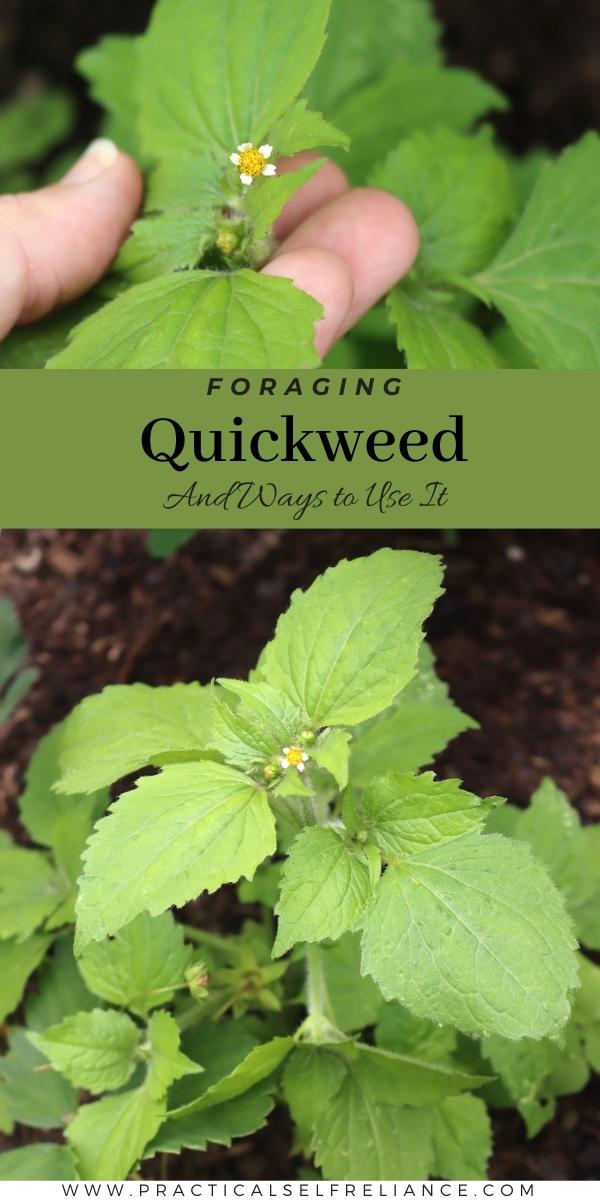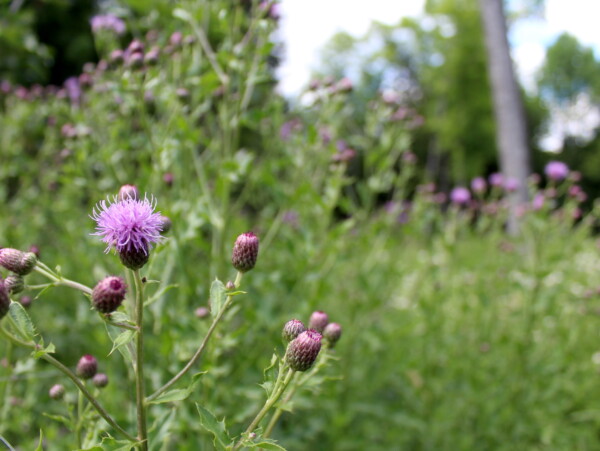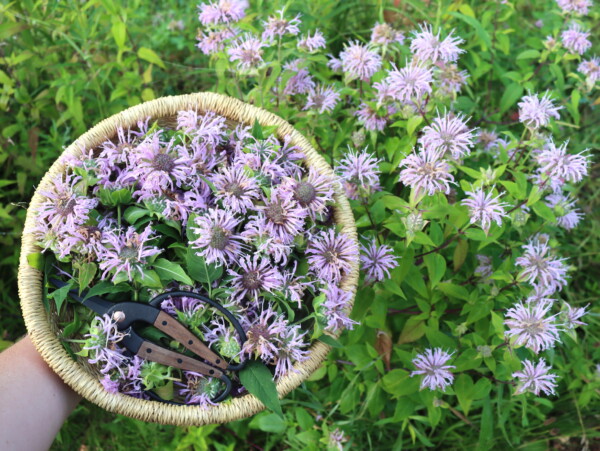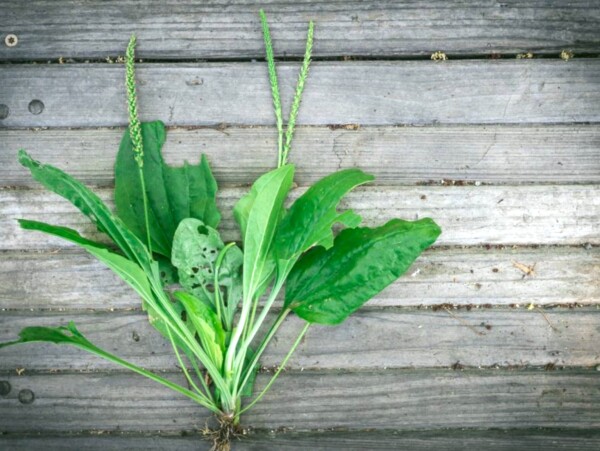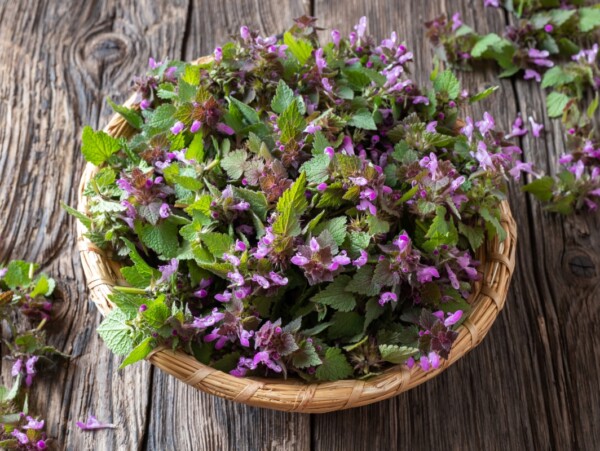Affiliate disclosure: This post may contain affiliate links. Please see our Privacy Policy.
Quickweed (Galinsoga parviflora) is an edible weed that’s found all over the world. It’s popular in South American cuisine, where there are traditional dishes that use this fast-growing wild weed.
It’s also used medicinally to treat bug bites, stings, cuts and rashes, as well as a few internal conditions.
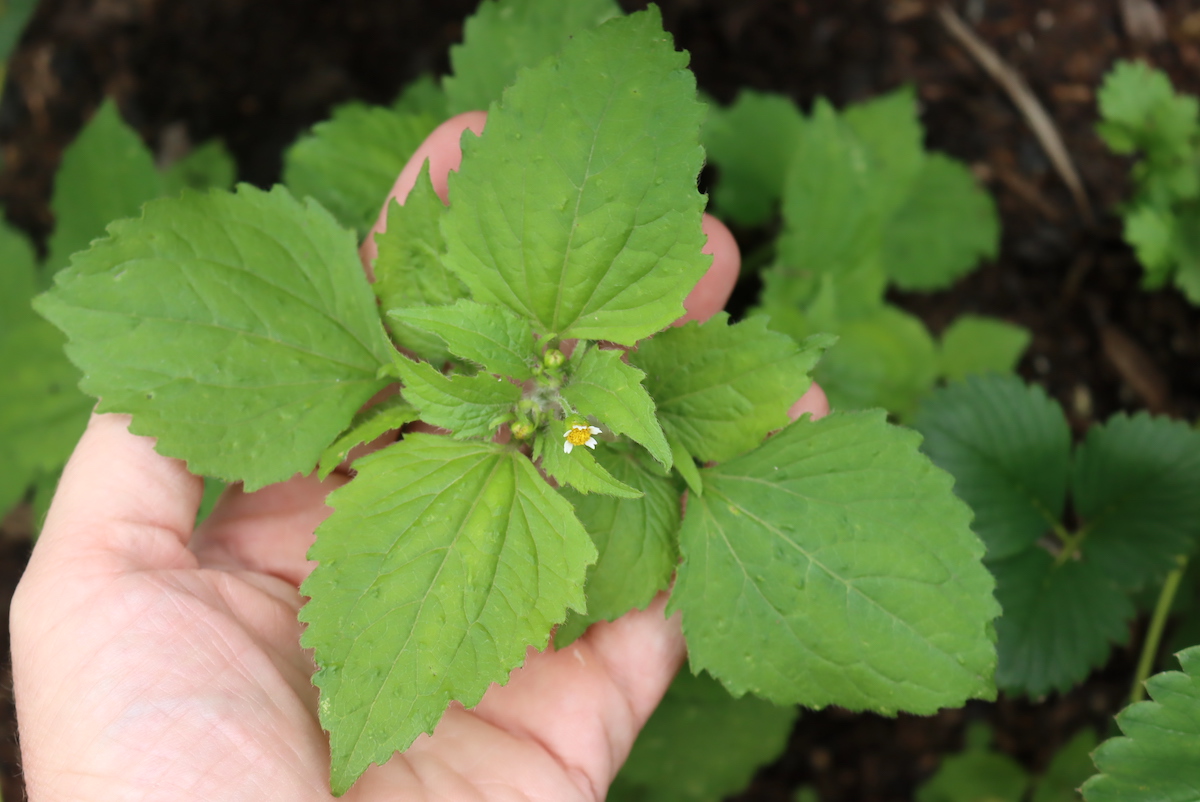
No matter how I try, it’s impossible to keep quickweed out of the garden. It tends to pop up midsummer and grow to full-blown plants within just a week or two.
One week the garden will be meticulously tended and weed-free, and then a week later, whole beds have gone to quickweed.
That is, of course, how this edible wild weed gets its name. It almost seems like the plants just teleport in overnight. In reality, they’re just a fast-growing, heat-loving weed that takes off mid-summer.
They especially love disturbed soil, so they almost always make their way into gardens, but they also do well along roadsides, construction sites, and anywhere there’s been digging.
Quickweed plants are really easy to pull, since they tend to have weak root systems and only grow in soft soil. That means harvesting this tasty edible wild weed is a snap, and it’s always more fun to turn “weeding” into “harvesting.”
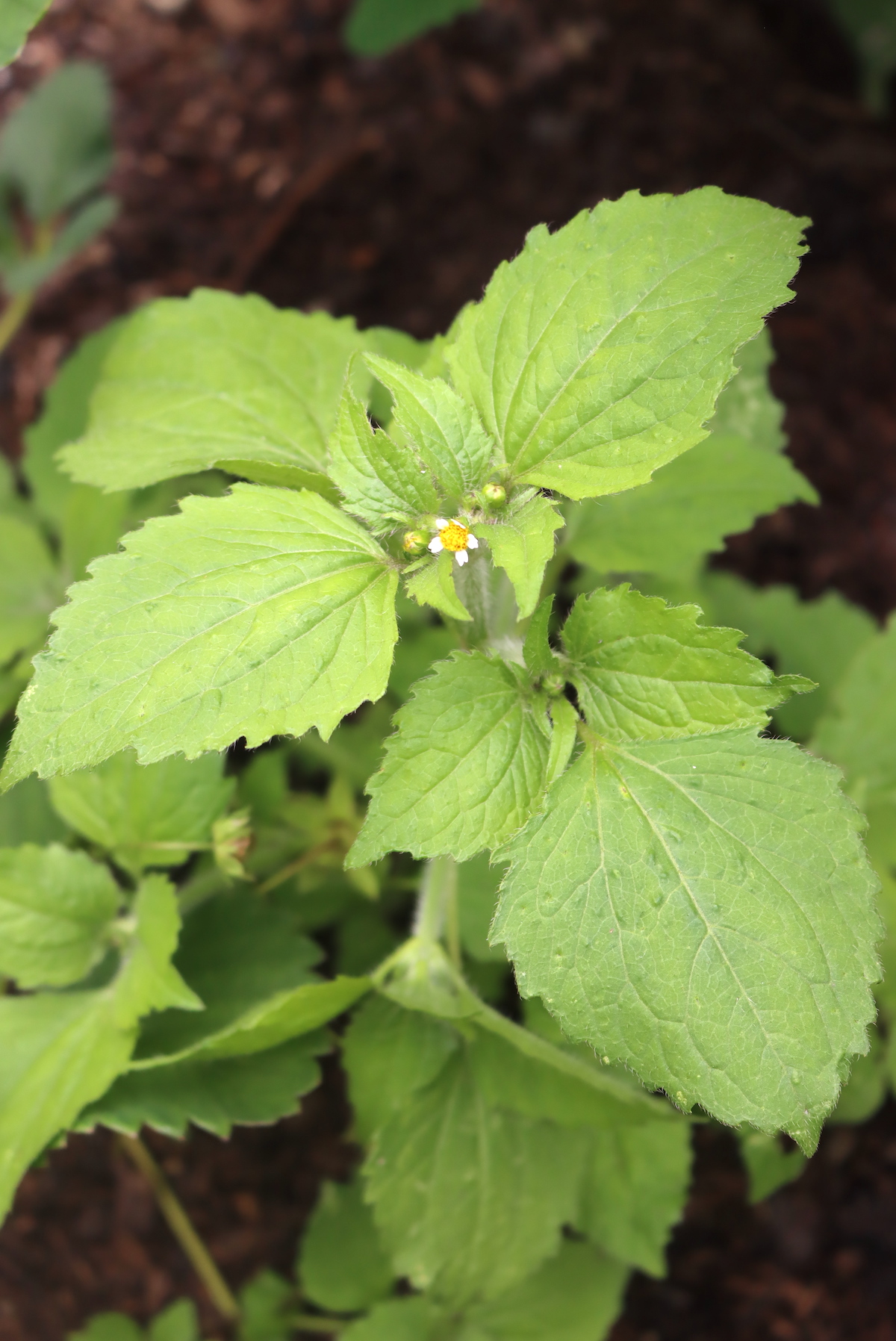
What is Quickweed?
Quickweed (Galinsoga parviflora) is an annual herbaceous weed native to South and Central America but has naturalized throughout much of the world. It’s a member of the Asteraceae or daisy family.
In part due to its extensive range, Quickweed is known by many common names, including galinsoga, French weed, soldiers of the queen, gallant soldier, paco yuyo, potato weed, and albahaca silvestre.
The common name “Gallant Soldier” comes from a mispronunciation of the Latin genus, galinsoga. You’d think it would have some historical significance like this was used to feed soldiers…or the plant stands errect like a brave soldier…but no.
Is Quickweed Edible?
Quickweed is entirely edible. You can eat the stems, leaves, flowers, and seeds raw or cooked. You can also dry it or blanch and freeze it for later use. Herbalists also use Quickweed medicinally, both internally and externally, to treat various conditions.
Additionally, Quickweed is sometimes used as fodder for cattle but may be toxic to goats.
Quickweed sometimes grows in waste places, but it’s best to avoid foraging for it in areas where it may be contaminated, such as lawns that have been sprayed with pesticides and roadsides.
Quickweed Medicinal Benefits
Historically, herbalists have used Quickweed in various preparations for scurvy, colds, flu, eye issues, toothaches, blood coagulation problems, and skin irritations like eczema and lichen. Depending on the ailment, the fresh leaves and juice were used externally or taken orally.
Modern herbalists often reach for Quickweed to create a quick poultice to help stop the bleeding from minor cuts and soothe irritation from nettles, similar to how yarrow and plantain are used.
One modern study indicated that some of these traditional uses might be founded. The study found that Quickweed extracts display various helpful properties, including antibacterial, antifungal, antioxidant, cytotoxic, anti-inflammatory, urease, α-glucosidase, hepatoprotective, nematicidal, and hypoglycaemic activities.
Another study found that Quikweed extracts displayed significant anti-arthritic and anti-platelet activity compared to standard drugs. While further study is still needed, it does add credibility to some of Quickweed’s historical uses to treat blood issues.
Where to Find Quickweed
Your garden is one of the best places to find quickweed, regardless of where you live. It thrives in any soil type, and it loves disturbed soil from tilling, raking and hoeing.
Quickweed is native to South and Central America but has naturalized throughout much of the world. It usually grows in disturbed areas, so you’re likely to find it in gardens, roadsides, and waste places.
Quickweed prefers full sun and moist, well-draining soil. However, it will tolerate partial shade and a wide range of soil types. Quickweed will grow in clay, sand, or loam and with acidic, neutral, or basic pH.
When to Find Quickweed
Quickweed is a warm weather annual and reproduces with quick germinating seeds as long as the conditions are suitable. In warm climates, like Florida and further south, you may find Quickweed year round.
In much of North America, it can be found from about May to October. It starts growing in the spring after the last chance of frost when the soil warms and dies in the fall with the first frost.
Identifying Quickweed
Quickweed is a green, slightly hairy, branched herb that may grow up to 30 inches tall. As the name suggests, it grows and multiplies rapidly, especially in freshly disturbed areas.
Though it’s a member of the daisy or Asteraceae family, the flowers are small and not very noticeable from a distance.
Quickweed Leaves
Quickweed has opposite leaves on opposite branched stems. The leaves are egg-shaped to triangular and ¾ to 2 ½ inches long.
The tips are bluntly pointed, and the bases are rounded and attached to stems about a ½ inch long. They are shallowly toothed, slightly hairy, and green.
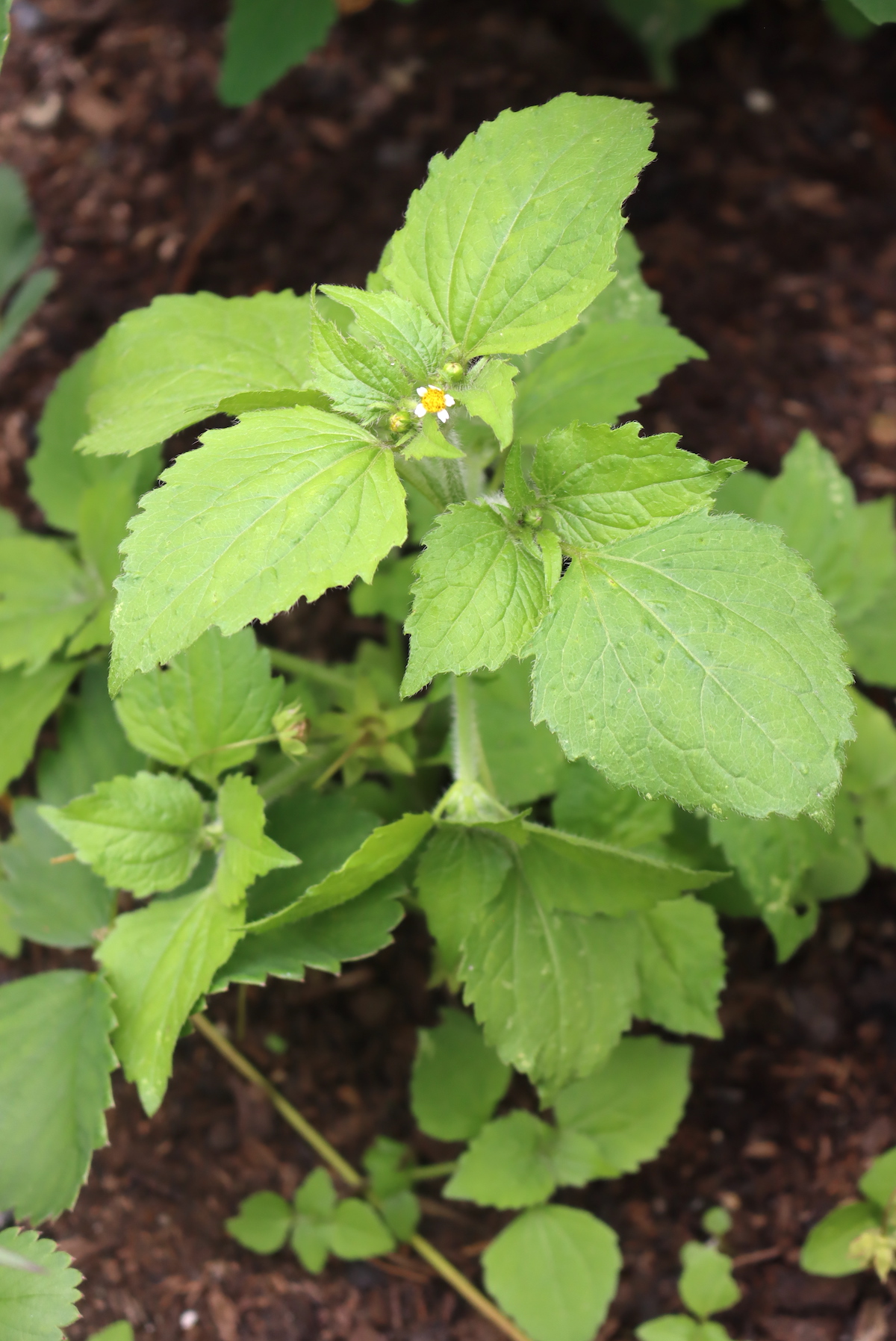
Quickweed Stems
The stems are branched, green, and smooth or slightly hairy. They may be erect to sprawling and up to 30 inches long, though they are generally a bit shorter.
Quickweed Flowers
Quickweed has tiny flowers that are about ¼ inch in diameter.
They have a central yellow disc and three to eight widely spaced petals. The petals are usually notched in 2 to 3 parts. Typically the petals are white, but occasionally they may be light pink.
Quickweed blooms from early summer until frost.
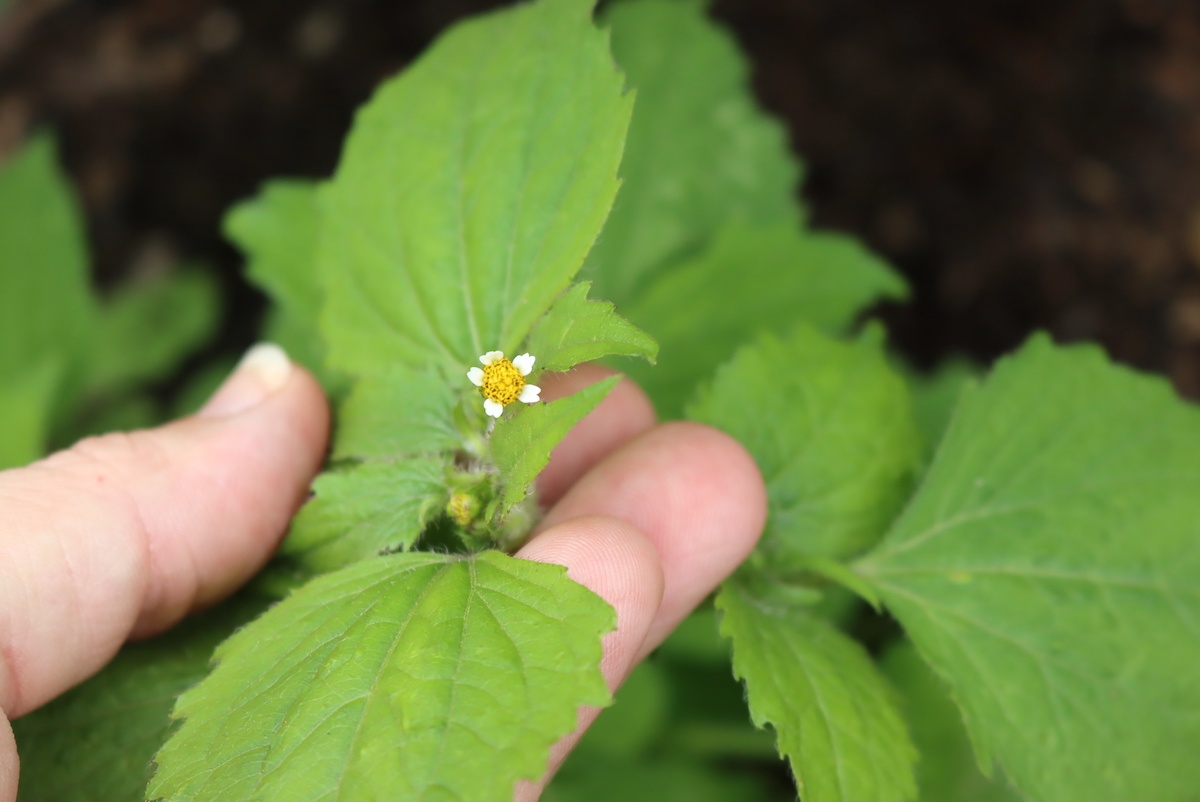
Quickweed Look-Alikes
Quickweed is sometimes confused with the toxic Coat Buttons (Tridax procumbens) due to their similar appearing flowers. However, Coat Buttons differs in several noticeable ways:
- Coat Buttons is a creeping plant that hugs the ground except for its flower stems, while Quickweed grows more erect.
- Coat Button leaves are coarsely serrated and oblong to ovate with wedge-shaped bases.
- Coat Button seeds are each attached to a head of pappus bristles that allow them to disperse with wind.
Quickweed is also mistaken for Shaggy Solider (Galinsoga quadriradiata), a closely related edible species. It can be distinguished from Quickweed in the following ways:
- Shaggy Solider is hairy overall on the stems and leaves.
- Shaggy Soldier flowers tend to have larger rays that are almost always notched in three parts.
Ways to Use Quickweed
This weed can be a nuisance in the garden but can be put to good use. Quickweed can be eaten raw or cooked. Though it can be harvested anytime, Quickweed is often the tastiest and most tender before it has flowered.
Raw Quickweed may be used in salads, pestos, green smoothies, or vegetable juices. Most foragers choose to use it as a pot herb, adding it to soups, stir-fries, or just blanching or sauteing it on its own. It’s mild and excellent with a bit of butter and salt, and pepper. It may have a mild artichoke-like flavor.
To preserve Quickweed, you can blanch and freeze it like spinach or other tender greens. You can also dehydrate it to add to soups or stews. Typically, the dried greens are screened to remove the tougher flower buds and pieces of stem.
You can also use Quickweed medicinally. Use fresh juice or a poultice of the leaves to treat nettle stings, mild skin irritations, and mild cuts. Drink Quickweed juice or tea to boost vitamins when you’re under the weather.
Quickweed Recipes
Looking for specific ways to use quickweed? Try any of these recipes:
- Quickweed is part of a delicious Columbian soup called Ajaco. Learn to make Ajaco con Guascas (chicken soup with Quickweed) from the Forager Chef.
- Add a delicious, wild side to your summer cookouts with this quickweed lemon caper sauce from Wild Food Girl.
Edible Wild Weeds
Looking for other edible wild weeds?
